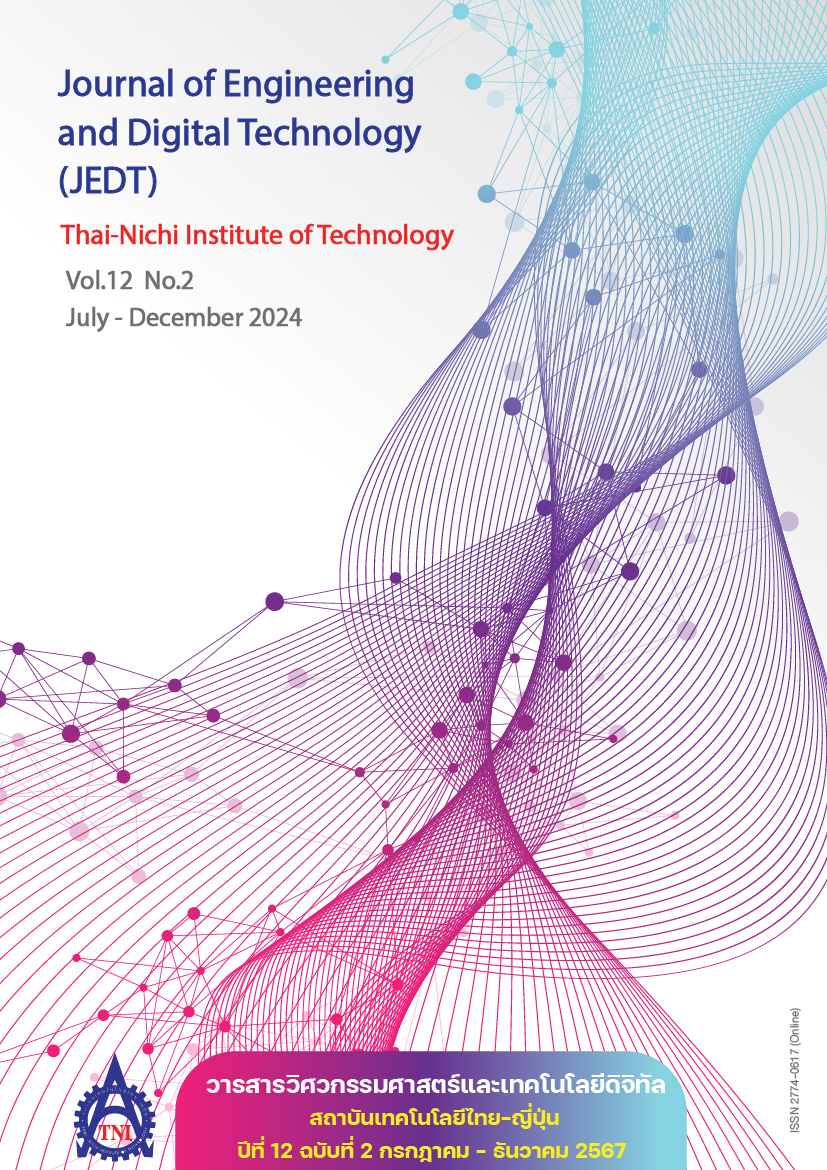The Comparison Between Structural Equation Modeling and Multiple Linear Regression Analysis to Predict the Parents’ Intention of Using Child Car Restraint in Bangkok
Main Article Content
Abstract
This research aims to study the causal variables influencing on the intention of parents in Bangkok to use child car restraint. The questionnaire is developed based on the Theory of Planned Behavior, Government Influence, Price Fairness, and Safety Awareness. The data are collected from 316 parents in Bangkok who have children’ age under seven years old. The Structural Equation Modelling (SEM) is used to test the causal variables relationship. The results show that the causal variable that most influence on intention to use CCR is safety awareness (SA), since the value of direct effect coefficient () is 0.526. The next casual variable influencing on intention to use is perceived behavior control with the value of effect coefficient (
) of 0.273, and the third influent casual variable is attitude with
value of 0.179. In addition, by applying the Multiple Linear Regression (MLR) with stepwise regression analysis results in the appropriate predictive equation of the parents’ intention to use child car restraint. The coefficients of the MLR model of factor attitudes, perceived behavioral control, and safety awareness are 0.260, 0.212, and 0.530, respectively. The results from the SEM and MLR are the same direction. With the integration method of SEM and MLR, the predictive equation from MLR is well reliable with corresponding to the results from SEM method.
Article Details

This work is licensed under a Creative Commons Attribution-NonCommercial-NoDerivatives 4.0 International License.
Article Accepting Policy
The editorial board of Thai-Nichi Institute of Technology is pleased to receive articles from lecturers and experts in the fields of engineering and technology written in Thai or English. The academic work submitted for publication must not be published in any other publication before and must not be under consideration of other journal submissions. Therefore, those interested in participating in the dissemination of work and knowledge can submit their article to the editorial board for further submission to the screening committee to consider publishing in the journal. The articles that can be published include solely research articles. Interested persons can prepare their articles by reviewing recommendations for article authors.
Copyright infringement is solely the responsibility of the author(s) of the article. Articles that have been published must be screened and reviewed for quality from qualified experts approved by the editorial board.
The text that appears within each article published in this research journal is a personal opinion of each author, nothing related to Thai-Nichi Institute of Technology, and other faculty members in the institution in any way. Responsibilities and accuracy for the content of each article are owned by each author. If there is any mistake, each author will be responsible for his/her own article(s).
The editorial board reserves the right not to bring any content, views or comments of articles in the Journal of Thai-Nichi Institute of Technology to publish before receiving permission from the authorized author(s) in writing. The published work is the copyright of the Journal of Thai-Nichi Institute of Technology.
References
Thai RSC, “Statistical Comparison of Road Accidents in Thailand (in Thai),” Road Accident Victims Protection, Bangkok, Thailand, [Online]. Available: https://www.thairsc.com/data-compare
S. Suwannawong, P. Chomchark, and A. Supithak, “The study of awareness of child car restraint compliance and the prediction of parents’ intention to use in Thailand,” in Proc. 49th Int. Congr. Sci. Technol. and Technol.-based Innov., Songkla, Thailand, Jan. 2024, pp. 241–247.
R. M. R. Tan et al., “Parental knowledge and beliefs on the use of child car restraints in Singapore: a qualitative study,” Singapore Med. J., vol. 61, no. 2, pp. 102–107, 2020.
Y. Sun et al., “Analysis of factors influencing the use of child restraint system by parents of children aged 0–6 years: An information, motivation, behavioral skills model-based cross-sectional study,” BMC Pediatr., vol. 23, Jan. 2023, Art. no. 2, doi: 10.1186/s12887-022-03827-9.
K. Meksagul, S. Prakaiwichien, and A. Boonsue, “The prediction model of pm2.5 in Phayao province,” (in Thai), J. Eng. Digit. Technol. (JEDT), vol. 11, no. 2, pp. 114–124, Dec. 2023.
P. B. Lowry and J. Gaskin, “Partial Least Squares (PLS) Structural Equation Modeling (SEM) for building and testing behavioral causal theory: When to choose it and how to use it,” IEEE Trans. Prof. Commun., vol. 57, no. 2, pp. 123–146, Jun. 2014.
C. Jhantasana, “Methods of reporting research results of second-order construct of PLS-SEM,” (in Thai), Chulalongkorn Bus. Rev., vol. 42, no. 3, pp. 39–67, 2020.
T. Champahom, S. Jomnonkwao, W. Thotongkam, P. Jongkol, P. Rodpon, and V. Ratanavaraha, “Investigating parents’ attitudes towards the use of child restraint systems by comparing non-users and user parents,” Sustainability, vol. 15, no. 4, Feb. 2023, Art. no. 2896.
I. Armouti, R. Ezzati Amini, and C. Antoniou, “Modelling factors that impact the use of child safety seats for nursery school travel,” Traffic Saf. Res., vol. 3, Jul. 2022, Art. no. 00018, doi: 10.55329/kcgl3326.
K. Jiang, Y. Wang, Z. Yu, Z. Feng, and Z. Huang, “The use of car safety seats for children in China: A questionnaire survey based on the theory of planned behavior,” Traffic Injury Prevention, vol. 24, no. 5, pp. 414–422, 2023.
E. W. L. Cheng, “SEM being more effective than multiple regression in parsimonious model testing for management development research,” J. Manag. Develop., vol. 20, no. 7, pp. 650–667, 2001.
K. Nusair and N. Hua, “Comparative assessment of structural equation modeling and multiple regression research methodologies: E-commerce context,” Tourism Manage., vol. 31, no. 3, pp. 314–324, Jun. 2010.
N. Chantama and P. Wethyavivorn, “The comparison of utilization of multiple regression with structural equation model in construction industry research,” (in Thai), Kasetsart Eng. J., vol. 29, no. 98, pp. 1–8, 2016.


